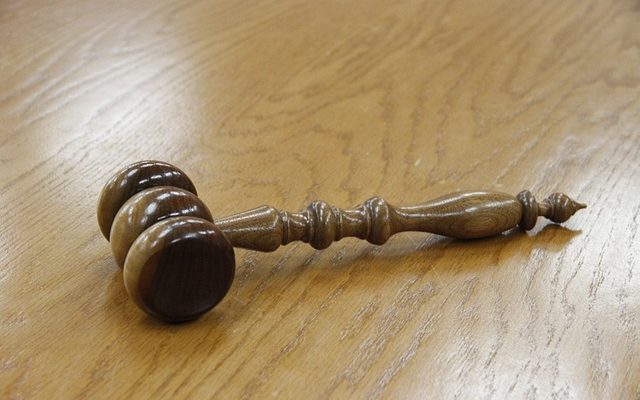Definition and Purpose of Settlements
Cerebral palsy settlements are financial agreements made between families and medical professionals or institutions when medical negligence results in a child developing cerebral palsy. The primary goal of these settlements is to provide families with the financial resources needed to care for their child. This money can cover medical treatments, therapies, and other necessary support services. Settlements are often preferred over trials because they can be resolved more quickly and provide a guaranteed outcome, unlike the unpredictable nature of a jury decision.
Role of Medical Malpractice
Medical malpractice plays a significant role in cerebral palsy cases. It occurs when healthcare providers fail to deliver the standard level of care, leading to injury or harm. In the context of cerebral palsy, this often involves mistakes during prenatal care, delivery, or immediately after birth. These errors can result in brain damage, which is the underlying cause of cerebral palsy. Settlements in such cases aim to hold medical professionals accountable for their actions, ensuring that families receive compensation for the harm caused.
Importance of Legal Representation
Having skilled legal representation is crucial in cerebral palsy settlement cases. An experienced attorney can navigate the complexities of medical malpractice law and advocate for the best possible outcome for the family. They gather evidence, negotiate with insurance companies, and, if necessary, prepare for trial. Legal expertise ensures that families are not shortchanged and receive the full compensation they deserve. With the right legal support, families can focus on caring for their child, while their attorney handles the legal proceedings.
Key Factors Influencing Settlement Amounts
Severity of Cerebral Palsy
The severity of cerebral palsy plays a significant role in determining settlement amounts. This condition can manifest in various forms, from mild to severe, affecting muscle control and coordination. Children with more severe cases often require lifelong care, which can include physical therapy, medications, and surgeries. The more intense the care needed, the higher the potential settlement. This is because the settlement aims to cover not just immediate medical expenses, but also future costs associated with ongoing care.
Extent of Medical Negligence
Medical negligence is a critical factor in cerebral palsy settlements. If it can be proven that a healthcare provider’s error directly led to the condition, the settlement amount is likely to increase. This includes errors during childbirth, such as failing to monitor fetal distress or delaying a necessary C-section. Proving negligence requires comprehensive medical records and expert testimonies, which can substantiate claims and potentially lead to a larger settlement.
Economic Damages and Future Costs
Economic damages encompass the financial impact of cerebral palsy on a family. This includes past medical bills, current treatments, and anticipated future expenses. A detailed financial projection is often necessary to estimate the lifetime costs of care. Additionally, future costs may consider the child’s potential loss of income if their ability to work is impaired. Families often face a long list of expenses, such as:
- Ongoing medical treatments and therapies
- Specialized equipment and home modifications
- Educational support and vocational training
These economic considerations are crucial in calculating a fair settlement that addresses both present and future financial needs.
The Role of Medical Evidence in Settlements
Gathering and Presenting Evidence
In cerebral palsy settlements, the strength of the medical evidence is often what makes or breaks a case. Solid medical evidence can significantly influence the settlement amount. Collecting this evidence involves detailed medical records, diagnostic tests, and treatment histories. Families must work closely with their legal teams to gather comprehensive documentation that clearly shows the link between medical negligence and the child’s condition. This step is crucial as it lays the groundwork for the entire legal process.
Expert Testimonies
Expert testimonies are another critical component of medical evidence in these cases. These experts, often seasoned medical professionals, provide insights that can clarify complex medical issues for the court. They can explain how deviations from standard medical practices led to the injury, making it easier for judges and juries to understand the negligence involved. Having credible expert testimonies can tilt the scales in favor of a higher settlement.
Impact on Settlement Outcomes
The influence of medical evidence on settlement outcomes cannot be overstated. When the evidence is robust and clearly presented, it often results in more favorable settlements for the affected families. This is because defendants are more likely to settle out of court when they see that the evidence against them is compelling. On the other hand, weak or poorly organized evidence can lead to lower settlements or even a loss in court. Thus, the quality of medical evidence directly impacts the financial compensation families receive.
Legal Process for Cerebral Palsy Settlements
Navigating the legal process for cerebral palsy settlements can be a daunting task for families seeking justice. This process involves several key steps that can ultimately lead to securing compensation for the affected child and their family.
Initial Consultation and Case Evaluation
The journey begins with an initial consultation with a legal expert who specializes in cerebral palsy cases. During this meeting, the attorney will evaluate the merits of the case by reviewing medical records and other relevant documentation. This step is crucial as it helps determine whether there is a viable claim based on medical negligence. A thorough case evaluation sets the foundation for a successful legal strategy.
Filing a Lawsuit
Once the attorney determines that there is a case, the next step is to file a lawsuit against the healthcare providers or institutions responsible. This involves drafting and submitting legal documents to the appropriate court, formally initiating the legal proceedings. The filing of a lawsuit is a significant move, as it signals the start of a legal battle for compensation.
Negotiation and Mediation
After the lawsuit is filed, the process often moves into the negotiation phase. Here, both parties attempt to reach a settlement agreement without going to trial. Skilled attorneys will negotiate on behalf of their clients to secure a fair settlement that covers medical expenses, ongoing care, and other damages. Mediation may be employed as a tool to facilitate these discussions, providing a structured environment for both parties to come to an agreement.
The legal process for cerebral palsy settlements is intricate and requires the expertise of experienced legal professionals. Families are encouraged to seek guidance from attorneys who can navigate these complexities and advocate effectively for their rights.
State Laws and Their Impact on Settlements
State-Specific Caps on Damages
When it comes to cerebral palsy settlements, state laws can significantly influence the final amount. Some states impose caps on damages, particularly non-economic damages like pain and suffering. These caps are designed to limit the financial liability of defendants, but they can also restrict the compensation available to plaintiffs. For example, a state might limit non-economic damages to $250,000, regardless of the severity of the case. This cap can be a major hurdle for families seeking adequate compensation. It’s crucial to understand these limitations when negotiating a settlement.
Statute of Limitations
The statute of limitations is another critical factor that varies by state. This law sets the time frame within which a lawsuit must be filed. In cerebral palsy cases, this period often starts at the time of diagnosis, which might be at birth or years later. Missing this deadline can result in the loss of the right to seek compensation. Therefore, families must be aware of their state’s specific timeline to ensure they file their claim on time. Consulting with a legal expert early in the process is advisable to navigate these time-sensitive issues.
Variations in Legal Procedures
Legal procedures can also differ from state to state, affecting how a cerebral palsy case is handled. Some states may have more stringent requirements for presenting medical evidence or may mandate mediation before a case can go to trial. These procedural differences can impact the strategy and timeline of a case. Furthermore, the availability of specialized courts or judges experienced in handling medical malpractice cases can vary, potentially influencing the outcome. Understanding these procedural nuances is essential for effectively pursuing a settlement.
Economic Damages in Cerebral Palsy Cases
Medical Expenses and Lifetime Care Costs
Caring for a child with cerebral palsy often means facing substantial medical expenses. These costs can include everything from routine doctor visits to specialized treatments and therapies. The Centers for Disease Control and Prevention estimates that the lifetime cost of care for an individual with cerebral palsy exceeds $1.6 million. This staggering figure encompasses a wide range of services such as physical therapy, occupational therapy, and various medical interventions that may be necessary throughout the individual’s life.
Loss of Future Earnings
Another critical factor in determining economic damages is the potential loss of future earnings. Many individuals with cerebral palsy may have limited employment opportunities due to their condition. This can significantly impact their ability to earn a living, thereby affecting their financial independence. Calculating the loss of future earnings involves assessing the individual’s potential career path and estimating the income they might have earned if not for their disability.
Pain and Suffering
While not strictly an economic damage, pain and suffering are often considered in cerebral palsy cases. This includes the emotional and psychological impact on the individual and their family. The challenges of living with cerebral palsy can be immense, affecting the quality of life and overall well-being. Compensation for pain and suffering aims to acknowledge these hardships, providing some relief for the emotional distress experienced by the family.
In summary, economic damages in cerebral palsy cases are multifaceted, covering medical expenses, loss of earnings, and pain and suffering. Each of these elements plays a crucial role in determining the overall compensation awarded in such cases.
The Importance of Experienced Legal Counsel
Selecting the Right Attorney
Choosing the right attorney for a cerebral palsy case isn’t just about finding someone with a law degree. It’s about finding a professional who understands the complexities involved in medical malpractice and has a track record of handling similar cases. An experienced lawyer can make a significant difference in the outcome of a settlement. They know what evidence is crucial, how to negotiate with insurance companies, and what legal strategies will be most effective.
When evaluating potential attorneys, consider the following:
- Their experience with cerebral palsy cases specifically, not just general birth injury claims.
- Client testimonials or case outcomes that demonstrate their ability to secure favorable settlements.
- Their willingness to communicate clearly and regularly, keeping you informed throughout the process.
Benefits of National Law Firms
National law firms often have more resources at their disposal compared to smaller, local practices. This can include access to a wider network of medical experts, the ability to handle complex litigation, and more comprehensive support staff. While a local firm might offer a personal touch, a national firm can leverage its size and experience to maximize the potential settlement. They are often better equipped to handle the intricacies of a cerebral palsy lawsuit, from gathering evidence to negotiating with formidable legal teams.
Maximizing Settlement Amounts
The ultimate goal in hiring legal counsel is to secure the best possible settlement for the affected family. Experienced attorneys understand the full scope of compensation that a family might be entitled to, including medical expenses, future care costs, and non-economic damages like pain and suffering. They are adept at building a compelling case that highlights the impact of cerebral palsy on the child’s life, ensuring that no aspect of the claim is overlooked. This comprehensive approach often results in higher settlement amounts compared to cases handled without specialized legal expertise.
Recent Trends in Cerebral Palsy Settlements
Notable Settlement Cases
In recent years, there have been some significant cerebral palsy settlement cases that have caught public attention. One of the most remarkable cases involved a $183 million verdict awarded to a family in Pennsylvania. The case centered around a delayed C-section that resulted in the child developing cerebral palsy due to oxygen deprivation. Another notable case saw a Michigan family receiving $120 million after a similar delay in medical intervention. These cases highlight the growing recognition of the severe impact of medical negligence and the substantial financial compensation that can be awarded to affected families.
Average Settlement Amounts
The average settlement amount for cerebral palsy cases has seen an upward trend. Currently, it’s estimated to be around $1.4 million, adjusted for inflation. This increase reflects a broader understanding of the long-term care costs associated with cerebral palsy. Settlements often cover medical expenses, therapy, and other necessary lifelong care costs, ensuring families can provide for their children’s needs without financial strain.
Factors Driving Recent Changes
Several factors contribute to the recent changes in settlement amounts and trends. Firstly, the rising costs of healthcare and specialized care for children with cerebral palsy have pushed settlement figures higher. Secondly, there’s a growing awareness and understanding of cerebral palsy and its implications, which has led to more rigorous legal scrutiny and larger compensations. Lastly, advancements in medical evidence and expert testimonies have strengthened cases, allowing families to secure more substantial settlements. These elements combined demonstrate a shift towards ensuring that families receive adequate compensation to manage the lifelong challenges posed by cerebral palsy.
Challenges in Securing a Fair Settlement
Complexity of Medical Malpractice Cases
Securing a fair settlement in cerebral palsy cases is often a daunting task, primarily due to the complexity of medical malpractice claims. These cases require a deep dive into medical records, expert testimonies, and a thorough understanding of medical procedures. The intricate nature of proving negligence can be overwhelming. Attorneys must meticulously piece together evidence to demonstrate that a medical professional’s error directly resulted in the child’s condition. This process is not only time-consuming but also demands significant legal expertise.
Dealing with Multiple Defendants
In many cerebral palsy cases, multiple parties may be held accountable, such as doctors, nurses, and healthcare facilities. Navigating these waters can be tricky. Each defendant might have their own insurance company and legal team, all of whom are likely to fight to minimize their liability. This often results in prolonged negotiations and can complicate the path to a fair settlement. It’s essential for the legal team to coordinate these negotiations effectively to ensure that all responsible parties are held accountable.
Ensuring Adequate Compensation
Achieving a settlement that adequately covers the lifetime needs of a child with cerebral palsy is a significant challenge. The costs associated with lifelong care, therapy, and necessary medical equipment can be astronomical. Parents must work closely with their legal representatives to calculate these expenses accurately. Moreover, they must account for non-economic damages, like pain and suffering, which can be harder to quantify. A fair settlement should reflect both the tangible and intangible impacts on the child’s life. The negotiation process must thoroughly address these aspects to secure a comprehensive compensation package.
The Emotional and Psychological Impact on Families
Coping with a Diagnosis
Receiving a diagnosis of cerebral palsy can be overwhelming for families. The initial shock often gives way to a myriad of emotions, from denial to grief. Parents may struggle with feelings of guilt and helplessness, questioning if anything could have been done differently. Acknowledging these emotions is a crucial step in the healing process. Families often find solace in connecting with others who have faced similar challenges, sharing experiences and advice. Support groups and counseling can be invaluable resources, offering a safe space to express feelings and learn coping strategies.
Support Systems and Resources
Building a strong support system is essential for families navigating the complexities of cerebral palsy. This network might include family members, friends, healthcare professionals, and specialized organizations. Community resources can provide vital information and assistance, from financial aid to educational support. Many families benefit from engaging with advocacy groups that focus on cerebral palsy, as they offer guidance on accessing services and understanding legal rights. Additionally, online forums and social media groups can be a source of comfort, allowing families to connect with others globally.
Long-Term Family Considerations
Caring for a child with cerebral palsy is a lifelong commitment that impacts the entire family. Parents must plan for the future, considering factors such as long-term care needs, financial planning, and potential guardianship arrangements. Siblings of children with cerebral palsy may also experience emotional effects, requiring attention and support to ensure they feel included and valued. Open communication within the family is key to addressing these challenges, fostering an environment where everyone feels heard and supported. Families are encouraged to seek professional advice on financial planning and to explore options for securing their child’s future care and well-being.
Alternative Dispute Resolution in Cerebral Palsy Cases
Mediation vs. Trial
When families face the daunting task of pursuing compensation for cerebral palsy due to medical malpractice, they often find themselves at a crossroads: mediation or trial? Mediation offers a less adversarial approach, providing a platform for both parties to discuss their grievances with the aid of a neutral third party. It’s typically faster and less costly than going to trial. On the other hand, a trial can be lengthy and unpredictable, with outcomes hinging on a jury’s decision. The choice between mediation and trial often depends on the specifics of the case and the willingness of both parties to negotiate.
Advantages of Settling Out of Court
Settling out of court can be a practical choice for many families. It allows them to avoid the emotional strain of a trial, which can be particularly taxing when dealing with a child’s medical condition. Some key benefits include:
- Quicker resolution: Out-of-court settlements can be finalized in a shorter time frame, providing families with the necessary funds sooner.
- Control over the outcome: Both parties have a say in the final agreement, unlike a trial where a judge or jury decides.
- Reduced legal costs: Avoiding a prolonged court battle can save significant legal fees.
Role of Arbitration
Arbitration serves as another alternative dispute resolution method, though less common than mediation. In arbitration, an arbitrator acts similarly to a judge, reviewing the evidence and making a binding decision. This process is more formal than mediation but still less so than a court trial. Arbitration can be beneficial when parties want a decisive outcome without the public exposure of a court case. However, it often results in less flexibility compared to mediation, as the arbitrator’s decision is final and typically cannot be appealed.












Comments